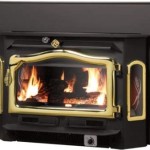The Importance of Regular Fireplace Chimney Sweeping
Fireplaces offer warmth, ambiance, and can even be a cost-effective supplemental heating source. However, to ensure safe and efficient operation, regular maintenance is crucial. A key component of this maintenance is chimney sweeping, a process often overlooked, but one that directly impacts homeowner safety and the longevity of the fireplace system.
Chimney sweeping involves the removal of accumulated soot, creosote, and other debris from the interior of the chimney flue. These byproducts of combustion can pose significant hazards if allowed to build up. Therefore, understanding the necessity of regular chimney sweeping is paramount for any homeowner who uses a fireplace.
Preventing Chimney Fires
One of the most critical reasons for regular chimney sweeping is the prevention of chimney fires. Creosote, a highly flammable substance, is a primary byproduct of burning wood. As wood burns, the smoke cools as it rises through the chimney. This cooling causes unburned particles and gases to condense and adhere to the interior chimney walls. This condensation forms creosote, which exists in various forms, ranging from a flaky deposit to a tar-like glaze. All forms of creosote are combustible.
The accumulation of even a thin layer of creosote can significantly increase the risk of a chimney fire. A stray spark or excessively hot embers can ignite the creosote, leading to a rapid and intense fire within the chimney. These fires are often difficult to detect early because they occur inside the chimney structure. If a chimney fire is left unchecked, it can spread rapidly, potentially igniting nearby combustible materials in the home, like drywall, framing, or roofing materials. This can lead to devastating structural damage and put lives at risk.
Regular chimney sweeping removes this accumulation of creosote, drastically reducing the fuel load available for a chimney fire. A clean chimney is a safer chimney, minimizing the possibility of a catastrophic event.
Improving Heating Efficiency
Beyond the safety aspect, chimney sweeping also plays a significant role in improving the heating efficiency of a fireplace. A buildup of soot and creosote can restrict the flow of air through the chimney flue. This restriction can lead to several problems that reduce the fireplace's overall effectiveness.
Firstly, a restricted flue can cause smoke to back up into the living space. This is both an annoyance and a potential health hazard, as smoke contains harmful particulates and gases. Secondly, a blocked or partially blocked flue reduces the draft, the natural airflow that draws air into the fireplace and carries exhaust gases up and out of the chimney. A poor draft makes it more difficult to start and maintain a fire, and it reduces the amount of heat that is radiated into the room.
Finally, accumulated soot and creosote can act as an insulator, preventing heat from radiating outward. This means that a portion of the heat generated by the fire is absorbed by the soot and creosote lining the chimney, rather than being transferred into the room. By removing these deposits, chimney sweeping allows the fireplace to operate more efficiently, maximizing the heat output and reducing fuel consumption. This translates to lower heating costs and a more comfortable living environment.
Preventing Carbon Monoxide Poisoning
Carbon monoxide (CO) is a colorless, odorless, and deadly gas produced by the incomplete combustion of fuels, including wood. A properly functioning fireplace system safely vents carbon monoxide and other combustion byproducts out of the home through the chimney. However, a blocked or obstructed chimney can compromise this vital function.
Obstructions in the chimney, such as nests of animals, debris, or excessive creosote buildup, can prevent the proper venting of exhaust gases. This can cause carbon monoxide to back up into the living space, potentially reaching dangerous levels. Carbon monoxide poisoning can cause a range of symptoms, including headache, dizziness, nausea, and confusion. In severe cases, it can lead to unconsciousness and even death.
Regular chimney sweeping helps to ensure that the flue is clear of obstructions, allowing for the safe and efficient venting of carbon monoxide and other harmful gases. This is a critical safety measure that can protect the occupants of the home from the potentially lethal dangers of carbon monoxide poisoning. Combined with the use of carbon monoxide detectors throughout the home, regular chimney sweeping provides a vital layer of protection.
In addition to the dangers discussed above, chimney inspections should be performed alongside chimney sweeping. Chimney professionals can look for cracks or damage that may not be visible to the untrained eye, ensuring the entire venting process is sound.

How To Prepare Your Home For A Professional Chimney Sweep

Chimney Sweep Cleaning Wethersfield Glastonbury Hebron Farmington

Why Cleaning Your Fireplace Is A Good Safety Habbit

How Much Does Chimney Cleaning Cost Orange County Register

What To Expect When Having Your Chimney Swept Vertical Care

Preparing For A Chimney Sweep Hassle Free Cleaning Inspection

Chimney Cleaning London On Area Safe Home Fireplace

Tips For Choosing The Right Chimney Sweep Job

Add Chimney Fireplace Cleaning To Your Spring Do List

Chimney Cleaning Sweep Services In Burlington Wi
Related Posts








